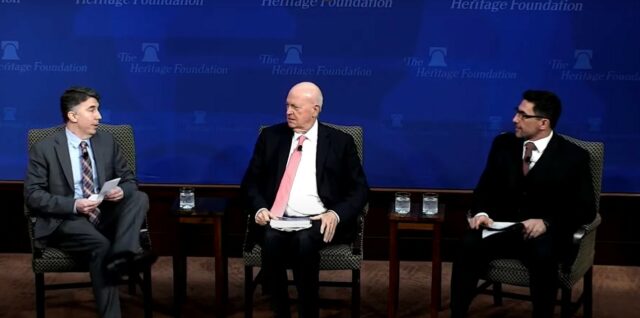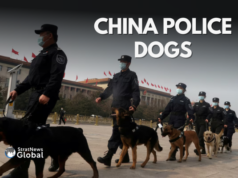NEW DELHI: India figures extensively in a policy paper titled ‘Winning the New Cold War: A Plan for Countering China’ released by the Heritage Foundation, a Conservative American think tank.
In his keynote address before the launch of the 143-page paper, Republican Senator from Florida Marco Rubio spoke about how China had become increasingly aggressive over the past few years and “the growing bipartisan consensus in the U.S. that something needs to be done about it”.
He then went on to note that the U.S., which had become the sole superpower post the second World War and the subsequent collapse of the Soviet Union, now faced a multi-pronged challenge from a regime that was totally alien and opposite to the concept of a free and fair rules-based world order.
“And so the result is we confront two challenges both at the same time,” he said. “The first is a new peer competitor as an adversary at a time when the nation has become complacent. And the second is that this comes at a time when we face the problem of societal and cultural rot.”
Michael Pillsbury, Senior Fellow, China Strategy, one of two editors of the report, elaborated on how the Cold War with China was radically different from the one with Russia.
Jeff M Smith, Director, Asian Studies Center of the Heritage Foundation, and the second editor of this report, said: “The paper is not afraid both to call China an adversary and to identify that we’re in a new Cold War, and we explain why in both cases. Why do we see China as an adversary? This is the series of actions that it is doing to undermine the United States. Why has the relationship grown to such a contentious level? Why in some ways is it a more potent adversary than the USSR was? We explore why the engagement policy that we pursued for decades failed, and how did we get to the stage that we’re at today.”
“We look at China’s current strengths and weaknesses and how those weaknesses can be exploited,” he said, “and where do we have to shore up our own weaknesses in order to be effective in the future.”
According to him, “part one looks at the big picture 30,000-foot level, and part two, which is really the heart of the plan, drills down specifically into 48 separate issues or fault lines in China-U.S. relations. And they’re broken up into five broad categories. What do we need to do to protect the Homeland, to secure U.S. prosperity? To properly reorient our defence posture, to hold China accountable and diminish the CCP’s influence? And what do we need to do to exercise global leadership.
“And these 48 separate issue briefs contain over 100 specific policy recommendations covering the whole gamut of issues that you could imagine in China-U.S. relations. Export controls. Chinese lobbying. CCP espionage and IP theft efforts, critical minerals supply chains, and on restoring conventional deterrence.”
The report “is a grand survey of the new Cold War, and each section does specific things. Identify the problem and articulate the policy solution. Look at how that policy solution has to be operationalized, examine the impact of that policy measure that we’re suggesting and then, look at what do we need to do with allies and partners. We do think this is a very much a challenge that requires burden-sharing and leaning on our treaty allies and strategic partners around the world.
Underlining the importance of the Quad, involving the U.S., Japan, Australia and India, he said these were among the few nations that had the capability to push back against Chinese coercion.
Recommending the expansion of “Economic and Security Cooperation with India,” the paper says the U.S. should aid India in developing the capabilities necessary to prevent continued Chinese incursions across the two countries’ disputed border and the naval capacity to remain a responsible steward of the Indian Ocean. “Finally, in order to realize stronger cooperation with India on China, Washington should engage with New Delhi in setting an agenda for the Western Indian Ocean and the Middle East…”
It also notes that a strong Indian–U.S. partnership, and sustained U.S. engagement with the rest of South Asia will deter Chinese efforts to dominate the “Indo” half of the Indo-Pacific. Enhanced U.S. economic engagement with the region will provide regional capitals alternatives to dependence on Beijing, “especially in the area of much-needed infrastructure development, where unfavourable terms and sovereignty-violating provisions of several agreements have exposed China to accusations of debt-trap diplomacy.”
Strengthening the Indian-U.S. partnership, developing India’s role as a cornerstone of the Quad grouping, and enhancing India’s capacity to defend itself from Chinese military encroachments must remain top priorities for U.S. policy in the region, the paper argues, and concludes that “the State Department should also develop new “Quad-Plus” engagements in the region, inviting other South Asian powers to participate in select Quad activities, potentially as observers, on issues of mutual interest.”
In a career spanning three decades and counting, Ramananda (Ram to his friends) has been the foreign editor of The Telegraph, Outlook Magazine and the New Indian Express. He helped set up rediff.com’s editorial operations in San Jose and New York, helmed sify.com, and was the founder editor of India.com.
His work has featured in national and international publications like the Al Jazeera Centre for Studies, Global Times and Ashahi Shimbun. But his one constant over all these years, he says, has been the attempt to understand rising India’s place in the world.
He can rustle up a mean salad, his oil-less pepper chicken is to die for, and all it takes is some beer and rhythm and blues to rock his soul.
Talk to him about foreign and strategic affairs, media, South Asia, China, and of course India.





